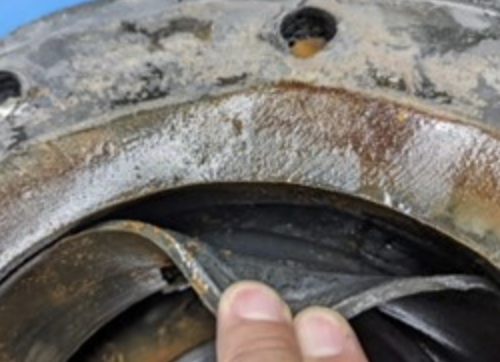Performance Expansion Joints: More Than Meets the Eye

Material validation is a critical step in crafting high-performance expansion joints, requiring an understanding of both internal and external attributes. Challenges arising from improper material selection and layering construction can significantly impact the lifespan and effectiveness of expansion joints, leading to issues like delamination, flange leaks, and compromised pressure ratings.
Expansion joints are constructed by layering various materials, making the selection and placement of each material critical. Testing and understanding individual material properties are crucial for media selection and overall expansion joint performance. Even with the best materials, poor performance may result from inadequate material compatibility and testing between layers, often leading to delamination and weak spots. Delamination, the separation of layers within the expansion joint, can occur due to adhesive or bonding agent failure.
In practical applications, exposure to operating conditions, including line pressure and temperature, can lead to delamination if bonding between dissimilar layers is not properly tuned. Image 1 illustrates layer delamination after exposure to water at 225 psi line pressure and 225°F.
Leaks at Flange
When selecting an expansion joint, design factors play a crucial role in minimizing installation issues and maximizing equipment uptime. Considerations, such as the amount of rubber and fabric in the flange, are essential. Image 2a depicts the flange of a performance expansion joint with multiple plies, enhancing sealability and reducing bolt load creep. In contrast, low-cost joints use less fabric and more rubber, resulting in decreased seal effectiveness over time.
Cycle Life Ratings
A vital consideration for an expansion joint is its cycle life rating, as excellent movement, burst, and vacuum ratings matter little if the joint cannot withstand regular use over time. Rigorous testing and validation of cycle life instill confidence in the expansion joint’s actual performance. Image 3 shows joint failure after 569 compression-elongation cycles at 225 psi water pressure and 225°F.
Material Validation Testing
Improving expansion joints involves understanding and enhancing individual layers. Evaluating material layers ensures proper material selection, enabling the expansion joint to withstand high-temperature and pressure conditions while providing desirable movement ratings.
Textile/Fabric Selection
Critical for maximizing expansion joint performance, textile and fabric selection, particularly tire cord (textile), influences strength and movement. Tensile strength and favorable elongation ratings contribute to increased overall movement ratings, balancing these properties results in a highly rated performance expansion joint.
Compound Selection
Optimal durability requires a skim compound with high bonding strength to different elastomer layers. Improving rubber-textile adhesion reduces variable joint results, minimizing delamination risks and potential major failures.
The development of a high-performance expansion joint begins from the inside out, with research and development of each layer crucial in material selection. A performance expansion joint should have best-in-class performance ratings backed by rigorous validation testing. Buyers, EPC engineers, pipeline designers, and facility maintenance teams must have a complete understanding of their expansion joints for informed decision-making. Full comprehension of research and design methodologies in material selection and layering construction empowers end users to make confident choices for their specific applications.
For more information, please visit: https://www.garlock.com/company/news-and-events
News Categories
- » NEWS HOME
- » Automation & Robotics
- » Industry 4.0
- » Material Handling
- » Sensors
- » Quality & Testing
- » Machine Vision
- » Laser & Optics
- » Metalworking
- » Motion Control & Drives
- » Hydraulics & Pneumatics
- » Process Industry
- » Renewable Energy
- » Agriculture
- » Home & Office Furniture
- » Environmental Tech









